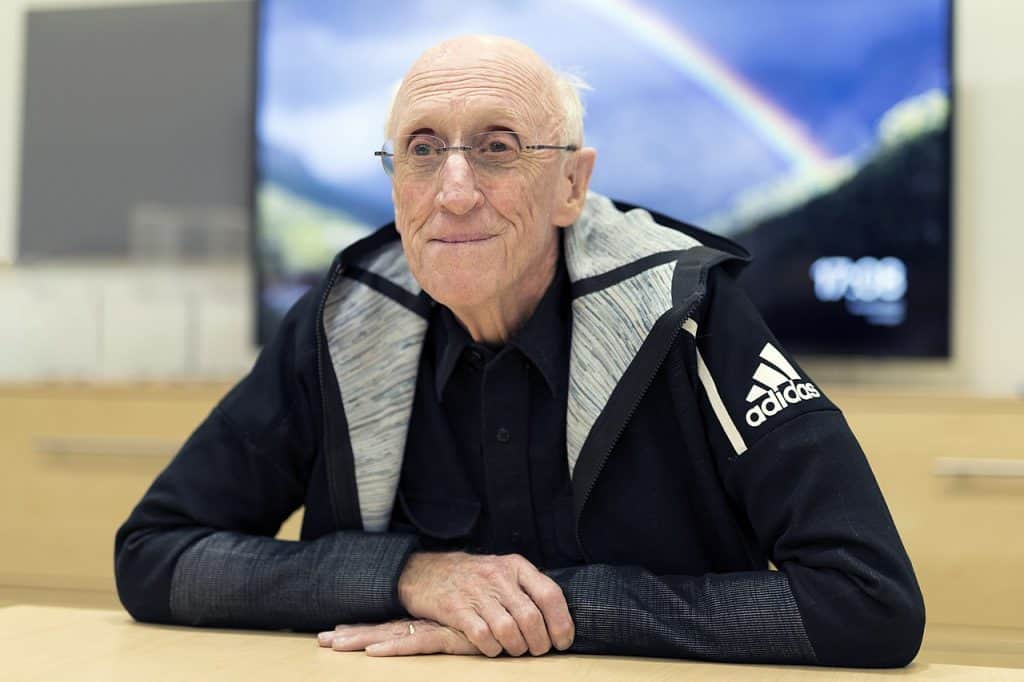In the previous episode we learned that Stewart Brand published the Whole Earth Catalog, which captured the imagination of many Americans, including Steve Jobs.


In 1985 Stewart Brand teamed up with Larry Brilliant to create a new electronic incarnation of the Whole Earth Catalog, the Whole Earth ’Lectronic Link (WELL), which began as a California-based dial-up bulletin board system (BBS). Newspaper journalists and editors were offered free accounts.
The computer conferencing tool used was PicoSpan. It offered a “Bozo filter,” which removed postings from other users on just the offended consumer’s screen, and a “Scribble” feature allowing users to remove their own regrettable “bozo” postings. As technology progressed, the WELL migrated onto the World Wide Web.
Conversations between different WELL users led to new collaborations, including the founding of new publications such as Salon and Wired.
Steve Jackson Games and the Legion of Doom
By 1990, the U.S. government was concerned by the rising number of illegal computer hacking activities by a group known as the Legion of Doom, including the theft of an E911 document that described how the emergency 911 system worked. The document imagined a disaster scenario where the emergency 911 lines could become overloaded, and people facing true emergencies would be unable to get through.
In February 1990, the Secret Service found this document posted on a BBS that was operated by Legion of Doom member Loyd Blankenship (known as The Mentor), who was at the time employed by Steve Jackson Games.
The U.S. Secret Service began a series of raids, including executing a warrant against Steve Jackson and seizing all his electronic equipment and copies of an upcoming game book from his premises. Jackson was forced to lay off nearly half of his staff after the deadline for his latest game book passed without getting his computers back.
The Secret Service was unable to find any copies of the E911 document on any of Jackson’s computers and eventually returned them all.
Jackson gave his customers the ability to send and receive private email as part of his business. However, when his server was returned, he found that this email had been deleted.
A district court agreed with Steve Jackson that despite the Secret Service’s denial, Secret Service personnel or delegates read and deleted the private email stored on the BBS.
But the court held that the Secret Service did not “intercept” the email contents, as they were not in transmission at the time they were accessed.
Jackson believed that secret access to any electronic communications that were stored and had not yet been read (retrieved) by the intended recipients should be considered an interception. However, he failed to find a civil liberties group with enough technical knowledge to be able to help him.
WELL members Mitch Kapor, John Perry Barlow, and John Gilmore decided to create the Electronic Frontier Foundation and support the lawsuit against the United States Secret Service as an amicus curiae (friend of the court).
The judge found that the Secret Service had no basis to suspect Steve Jackson Games of any wrongdoing and criticized their warrant preparation as “sloppy.” Steve Jackson Games was awarded $50,000 in statutory damages and $250,000 in attorney’s fees.
Free Software Movement
Another movement with some roots in the counterculture is the Free Software Movement, which began in the 1980s.
Software engineer Richard Stallman supplied the company Symbolics with a public domain version of his work on a Lisp interpreter. Symbolics extended and improved on his work and later refused Stallman access to the improvements that it had made. Stallman was so frustrated by this practice, which he named “software hoarding,” that he made it his personal mission to create alternatives to proprietary software.
In September 1983, Stallman posted a message on a Usenet group, announcing his intention to build a free Unix-compatible GNU operating system:
“Starting this Thanksgiving I am going to write a complete Unix-compatible software system called GNU (for Gnu’s Not Unix), and give it away free to everyone who can use it. Contributions of time, money, programs, and equipment are greatly needed.”
Stallman resigned from the MIT staff in January 1984 to build GNU on a full-time basis, with occasional outside consulting work to pay the bills.
In 1985 Stallman published the GNU Manifesto, where he explained why the software would neither be commercial nor in the public domain.
“GNU is not in the public domain. Everyone will be permitted to modify and redistribute GNU, but no distributor will be allowed to restrict its further redistribution. That is to say, proprietary modifications will not be allowed. I want to make sure that all versions of GNU remain free.”
Stallman’s philosophy is that computers should not lead to people being prevented from cooperating with each other and that proprietary software is a way to divide users.
This is greatly opposite the philosophy of Bill Gates, who in 1976 wrote a letter to hobbyists, requesting payment for his work:
“Who can afford to do professional work for nothing? What hobbyist can put 3-man years into programming, finding all bugs, documenting his product and distribute for free? The fact is, no one besides us has invested a lot of money in hobby software.”
In an interview with Samuel Abraham, Stallman explained his philosophy as:
“Goals such as success and fun are not bad, but they are not everything. To adopt them as one’s primary goals, as many people do, is a fundamental error: it is to aim too low, to have too small an ambition in life. [Once] you have taken care of your needs for survival and some basic comforts, it’s time to try to put some of your effort into making the world a better place. The better off you are personally, the more you should focus effort on helping others, instead of enriching yourself.”
In 1985 Stallman founded the Free Software Foundation to promote the freedom to study, distribute, create, and modify computer software.
Copyleft Licensing
Stallman wrote the Emacs General Public Licence in 1985, which begins with the following:
“GNU Emacs is free; this means that everyone is free to use it and free to redistribute it on a free basis. GNU Emacs is not in the public domain; it is copyrighted and there are restrictions on its distribution, but these restrictions are designed to permit everything that a good cooperating citizen would want to do.”
These ideas were also part of the GNU General Public Licence, which Stallman used as the licencing agreement of the GNU project.
This agreement uses copyright law to ensure a work remains freely available. These licensing agreements were, and still are, so ideologically different from typical licences for protecting the owner’s copyright that they have become known as copyleft.
In these agreements, the author surrenders some of his or her rights under copyright law. Where it differs from putting a work completely in the public domain is that the author can impose restrictions on usage that would more usually be reserved by the copyright holder.
Under copyleft, derived works may be produced provided they are released under the compatible copyleft scheme.
The General Public Licence received two major revisions to date. GPLv2 was published in 1991 and was adopted by many important open-source software projects, including Linux.
Development of the third version began in 2005, and the first “discussion draft” was launched by Stallman at MIT in January 2006.
MIT, Cambridge, Massachusetts, in January 2006
Stallman explained the major changes at the 2nd international GPLv3 conference in April 2006. While there were several changes in version 2, there was one change in particular that Stallman looks back on as significant:
“I think the biggest change in version 2 was to introduce a ‘Liberty or Death’ clause – the clause that says if somebody uses a patent or something else to effectively make a program nonfree then it cannot be distributed at all.”
The version 3 drafts contained “some changes that really are meant to be substantive changes. There are three main areas for this. One is to do with Tivoization, another has to do with software patents, and another has to do with compatibility with other Free Software licences.”
Tivoization is a word that Stallman made up that refers to the TiVo digital video recorder, which included programs licenced under GPLv2 but is designed so that it won’t run changed versions of those programs.
Stallman viewed this practice as a threat to freedom, saying “Freedom number 1, the freedom to change the source code so that it will do what you want; nominally, the users have that freedom, but really, the user does not have that freedom. You can change the source code so that it would do what you want, but then it won’t do anything.”
TiVo prevents the user from copying recorded TV programs outside of the TiVo, which is offensive to Stallman’s sensibilities: “This is a form of Digital Restrictions Management. Now, their goal is to restrict the users and deny the users freedom.”
With this in mind, Stallman added clauses to GPLv3 that prevent anyone from stopping other users from making modifications and that allow users to make software changes that bypass DRM.
The drafts were not favored by Linus Torvalds and other Linux kernel developers, who were happy with GPLv2 and voiced several objections to the proposed changes. Their position was that the effect of new end use restrictions was opposite of enabling freedom: “The existence of DRM abuse is no excuse for curtailing freedoms.”
After several updated drafts and a total of 2,636 comments, the official GPLv3 was released on June 29, 2007, and remains in common use today.
Linus Torvalds remained a strong critic of the changes, describing it as “a violation of everything that version 2 stood for.” He recognizes it as “a fine licence” for some scenarios but disagreed with the notion of the Free Software Foundation “trying to force everyone to upgrade” to a licence that is significantly different.
Today, there is a wide variety of licenses for software authors to choose from. Even if you do not publish software yourself, it is important to understand the meanings of the common software licenses. The O’Reilly book Understanding Open Source and Free Software Licensing is available online.
For further details on Stallman’s work and philosophy see Free as in Freedom by Sam Williams, the GNU website, or Stallman’s book Free Software, Free Society.
